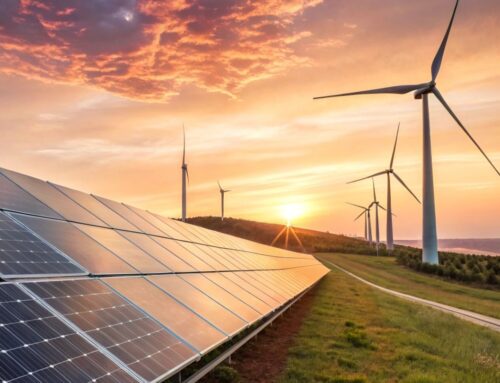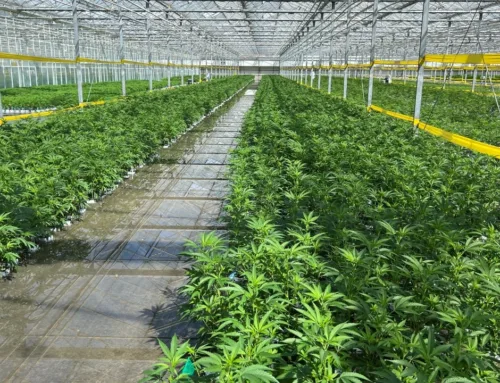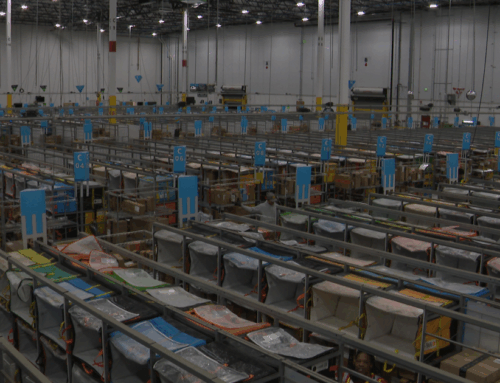The geothermal gamble: Fervo’s bold bid to disrupt clean energy
May 14, 2025
Industrial geothermal energy has been used for nearly two centuries. It‘s not a new concept, but in the United States, it‘s taken a backseat to other renewable energy sources like wind and hydropower.
One company is trying to change that.
Founded in 2017, Texas-based Fervo Energy is making groundbreaking moves in the clean energy landscape, and they’re doing it in Utah’s desert.
“We were founded with a simple idea that geothermal has been around for a long time, but if you could bring in more innovative drilling practices — like horizontal drilling, hydraulic fracturing, better fiber optic, sensing and data analytics to the field of geothermal,” Tim Latimer, CEO of Fervo Energy, said, “we could have a differentiated result that took it from being an energy resource that people think of most often as something that you’ll only find in Iceland or New Zealand to something that we could do in way more locations.”
Below southern Utah’s rugged red landscape lies a geothermal gold mine, which Fervo has been exploring since 2023.
“Utah is blessed with beautiful geothermal geology, which is why we’re here now. And we can even make this project economic, even though we’re really early in our journey,” Latimer said during a tour with U.S. lawmakers of the company’s private Cape Station enhanced geothermal systems project located in Beaver County, Utah.
Notably a leader in the current geothermal energy landscape, Fervo is working against the clock to make the renewable energy a household phrase — when people turn their light switch on, they’ll know the energy source it came from.
Innovating geothermal energy
When people hear the phrase “geothermal energy,” hot springs and geysers usually come to mind, or virtually anywhere hot, steamy water is present. The dry desert may not be what people visualize when they hear about geothermal energy. But it‘s what happens hundreds of feet below the surface where Utah’s geothermal geology shines.
Before breaking ground in Utah, Fervo worked with the federally funded Lawrence Berkeley National Laboratory to create the tools and technology needed to withstand the high-temperature environments deep under the Earth.
The research set the preliminary work for Fervo‘s first pilot project, partnered with Google, in 2021. There, engineers discovered that the “fervo design” of a two-well horizontal drilling for geothermal was successful.
“We drilled a deep horizontal injection well, about 10,000 feet down and 5,000 feet over, (then) hydraulically fractured it to connect it to a parallel deep production well, 10,000 feet down (and) 5,000 feet over,” Latimer said. “And at the site in Nevada, that was about 350 degrees Fahrenheit.”
“That was the first ever project that showed that horizontal drilling could work to unlock a massive geothermal resource the same way it did for the oil and gas industry.”
That project only produced three megawatts of power. One megawatt can power nearly 700 homes in a full year, which is not necessarily an economic success.
Project 2, Utah’s Cape Station, will produce 500 megawatts in its combined two-phase project.
The area in Milford, Utah, consists of both private and public land leased by the Bureau of Land Management, and is surrounded by windmill turbines. The geology, combined with the transmission line from the turbines, established an ideal setting for the project.
“What we found since day one, when we showed up, was people who were very collaborative, wanted to work with us, and so it checked all the boxes,” he added. “We had great local support, great policy support, hot rocks and good transmission.”
The deepest Fervo has drilled reached temperatures up to 440 degrees Fahrenheit and after “throwing a bunch of new tools and equipment at it” reached 520 degrees.
“We still have to work through a bunch of stuff to make 500 degrees Fahrenheit work,” Latimer said, but the deeper it gets, the hotter it gets, the more efficient energy you get.
“So we’ve gone from 350 to 440 degrees Fahrenheit just in the last three years. Our goal is within two or three years, we go down to 500 degrees Fahrenheit. We’re not there yet. There’s still a lot of innovation we need to do to get to those temperatures. … It‘s a bit of a race for us,” he said.
Twenty wells have been rigged in Phase 1 of the Cape Station project. This phase will produce 100 megawatts of power and is expected to be commissioned next year.
Phase 2 will produce 400 megawatts of power and will come online in 2028.
“500 megawatts is big enough to make an impact all on its own,” Latimer said. But it‘s only the beginning.
“What we’re doing here is proving that a new kind of geothermal works, and this is basically ground zero for what technology we think is going to transform the energy sector here in the United States and then around the world.”
Making geothermal economically viable
The cost of geothermal drilling previously dampened the aspirations of geothermal energy as an economically sound energy source.
Operating the drilling site costs Fervo more than $150,000 per day. The first project in Nevada took 75 days to complete, which Latimer said was great at the time. “But if that‘s all we could do from a drilling performance, geothermal would never (make) economic (sense).”
The first well drilled in Utah took 43 days. A few months ago, a new record of 17 days was set, which they believe they can surpass.
With a background in oil and gas, Latimer said it “boggled his mind” when he looked into geothermal engineering and realized that no one in the industry was utilizing the latest technology. He said the response he often got was that they couldn’t afford the “fancy rigs.”
“The oil and gas industry isn’t paying for high-spec, high-technology rigs because they’re charitable or you get a warm and fuzzy feeling. They’re paying for it because it delivers a performance that makes it worth it, even though you’re paying the expanded technology cost,” Latimer emphasized.
So, the company made the investment. It was the first time drilling rig contractor Helmerich & Payne, Inc. had used its modern rigs on a geothermal site.
“The first drilling rig I ever worked on in my career was an HP flex three rig, and it‘s the exact same stack of rig that we have out here on site,” Latimer said.
“When we started this company, a lot of people told us, ‘those guys don’t know what they’re doing. Look, they’re using those expensive rigs on geothermal.’”
“But, you know, we got the last laugh.”
Search
RECENT PRESS RELEASES
Related Post





View Comments